How to make fertilizer from grass in a barrel and use it?
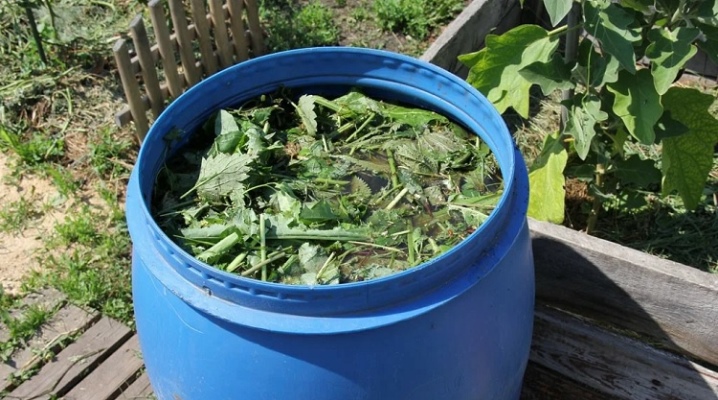
Each of us knows that the land in different parts of our country or even in one settlement may have different properties in terms of fertility. And often we need to grow plants that in any case will require constant feeding and fertilization.
Composting is often time consuming and mineral fertilizers cannot always be used. But plants need feeding. How to be? A way out of the situation for plants in the garden is to prepare fertilizer from grass in a barrel. By the way, even the most common weeds are suitable for him.
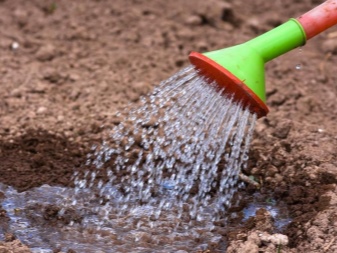
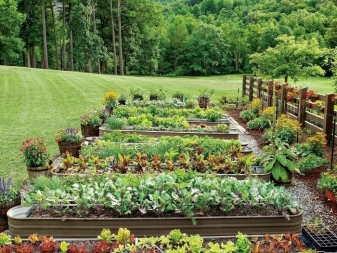
Peculiarities
All processes occurring in the grass, which is separated from the roots, are characterized by a sharp acceleration if they are placed in water. It's just that bacteria, under normal conditions, are developing new territories for life extremely slowly due to the fact that they can assimilate nutrient substances only in the form of aqueous solutions.
In addition, water carries out the leaching of minerals and juices from plants, which microorganisms can ferment and transform into food for themselves. Therefore, in a liquid type fertilizer, substances of the humus group are formed earlier than microorganisms can process the green mass by at least 25 percent.
Such a composition with water, in contrast to feeding in a liquid form, is not so toxic. The reason is that there are no enzymes of the gastrointestinal type of animals or birds. For this reason, the main advantage of just such a material will be the combination of a partially rotted organic base and humus-type substances, which is why the fertilizer saturates the soil with nutrients, which allows it to attract worms and not cause any damage to plants.
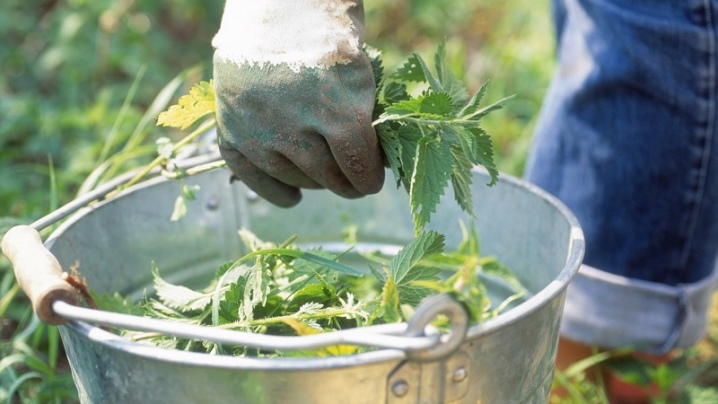
Can any plants be used?
Many are interested in the question of what plants can be put in order to get such an infusion. Let's say right away that bacteria eat dead organic matter, which is why there is no difference for them in the breed or type of vegetation at all. They carry out the release of enzymes, the task of which is the destruction of polysaccharides, which are complex compounds of the organic group, transforming them into various kinds of organic acids, as well as less complex carbohydrates.
Some of the substances that have been obtained through fermentation will be food for hydrolysis bacteria, which is why the 1st stage of decomposition is often called hydrolysis. In addition, bacteria that form organic acids also thrive here. They emit gases, among which ammonia should be noted. There are other organisms that convert organic matter into humic substances. But for all the aforementioned bacteria, vegetation of any type will be a food source. The main thing is that it consists of complex carbohydrates.
That is, any weed or grass, before becoming food for microorganisms, must be fermented and transformed into ordinary saccharides.
The only exception is plants that are affected by pests or diseases. Bacteria can not always process them, and this can make such compost destructive.
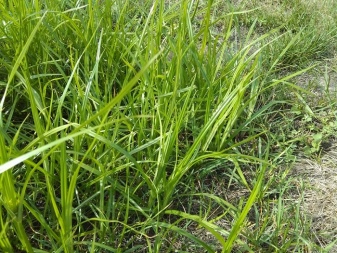
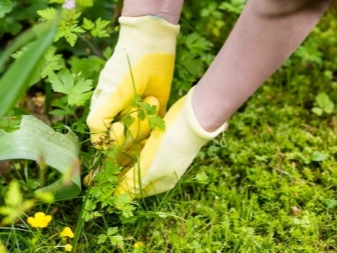
Cooking steps
Now let's figure it out directly with how to properly make such a fertilizer with our own hands. In total, there are 4 most important stages in the creation of such a fertilizer:
- selection of capacity;
- preparation of green mass;
- loading and uploading;
- temperature control and maturation.
Let's talk about each stage in more detail.
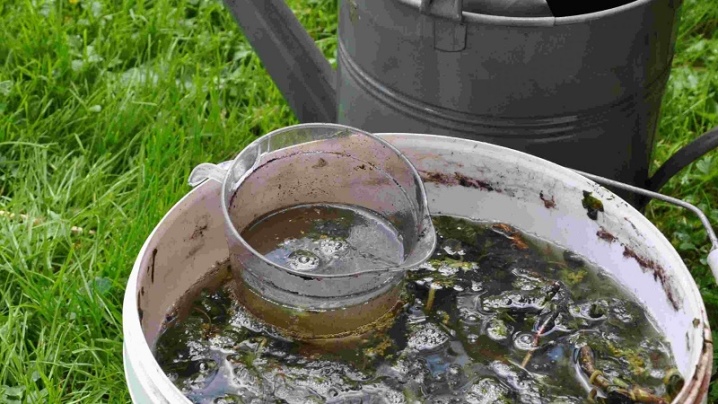
Barrel selection
To start fertilizing, you first need to select a container. For this, containers made of plastic or metal of any shape with the required volume are perfect. The main thing is that the material from which they are made is immune to the effects of organic and inorganic acids. In no case should you use barrels where aggressive or hazardous substances were previously stored or were for some time. For example, fuels and various petroleum-based products. They pose a threat to microorganisms, no matter how many containers are washed. In addition, do not use vessels made of metal on which paint has peeled off or rust has emerged.
The direct preparation of the container is to install it in a place that is well lit by the sun's rays. After all, the more ultraviolet light gets here, the better it will be to rot the contents that will be in it. If you need to decay faster, then you can use rags, wrapping them around the container every evening. This trick will reduce the temperature change in the barrel, and the bacteria will feel more comfortable, because they are extremely susceptible to temperature changes downward.
To increase the efficiency of solar heating even more, you can paint the outer surface of the barrel with black paint, which will increase its heating. In the daytime, it is better to open the barrel, and in the evening, cover it with an insulated lid with ventilation holes.
This is necessary to remove gases that can negatively affect the activity of bacteria.
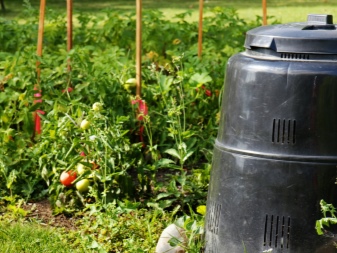
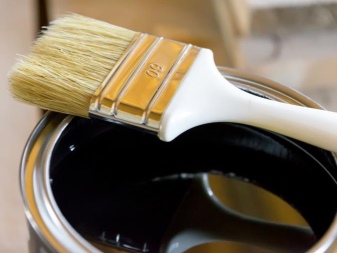
Preparing the mass of greens
The preparation of a mass of greens usually consists of crushing it. This is required most often in 2 cases:
- because of the size and rigidity, laying vegetation in a barrel is fraught with difficulties or it is impossible to do this at all;
- you will use slightly or completely rotted grass as fertilizer, where you will need to lay out the material around the plant or, after adding it, dig up the ground.
For grinding, you should use the following methods:
- cut everything with a sharp knife;
- break with your hands;
- cut everything with large sharp scissors.
The optimal size of chopped greens will depend on what the chopping is done for. To put stalks with great rigidity in the barrel, they should be made shorter in length than the minimum dimensions of the barrel. If soft and partially decayed or hard, but completely decayed grass must be placed around the trunks of plants or for digging, then a size of 50-100 millimeters will be sufficient.

Loading and uploading
The crushed material should be filled with 70 percent of the container, and then filled with water. A number of people fill the container with grass to the brim, claiming that more vegetation will fit there, and the resulting composition will be more concentrated. There is a certain meaning here, but the more grass you soak in the container, the more difficult it is to mix it, which means that it is more difficult to get a high-quality concentrate that can be used as fertilizer.
It is better to pour greens with flowing water. The reason is chlorine, which is contained in tap water and has a negative effect on bacteria and processes in the tank.
But the option with tap water is also possible if you let it settle for 48-72 hours in a cool place, which is protected from direct exposure to ultraviolet radiation.

Temperature regime and maturation
Let's say a few words about a suitable temperature regime. The activity of bacteria, and hence the rate of decomposition of the material, will seriously depend on the temperature:
- at 5 degrees and below, microorganisms go to sleep, and the transformation process stops;
- at a temperature range of 5-15 degrees, the activity of bacteria will be very slow, which significantly increases the likelihood of the appearance and subsequent development of pathogenic processes, which is why organic matter is transformed into anything, but definitely not into humus;
- at a temperature of 15-25 degrees, the activity of microorganisms is carried out in a psychrophilic mode, which is why their productivity will be higher, but still low, but they can easily tolerate temperature drops by 5 degrees even for an hour;
- a temperature of 30-40 degrees is most comfortable for such microorganisms, because they begin to work in a mesophilic mode, when their productivity increases, but the permissible temperature drop per hour reaches only half a degree;
- at a temperature of 45-55 degrees, bacteria live in a thermophilic mode, because of which their activity will be maximum, but the maximum allowable temperature difference within an hour is also half a degree.
With an understanding of these dependencies, you can choose the optimal temperature regime. For example, the psychrophilic type does not require anything other than wrapping the barrel with blankets, which will prevent it from losing temperature so quickly. And the mesophilic regime can be done only in the summer without heating, but you will need to insulate the barrel well in the evening or apply additional heating.

You can also use the immersion of the barrel in a not very powerful electric heater, but which have a large surface area that can be heated. The thermophilic regime can be created using:
- permanent mixing several times a day;
- forced heating;
- permanent temperature control at different levels.
If some of the conditions are not met, then most of the bacteria will die and very quickly. Also, other processes will be carried out, except for humification, which means that it will be impossible to use this material as fertilizer.
Let's also say a few words about the maturation of the concentrate with yeast or manure. This process can be divided into 3 stages:
- fresh;
- slightly rotten;
- completely rotten.
An infusion is considered fresh if it does not yet have a strong odor. It is at this stage that the fermentation of organic matter starts, so the composition can still be called useless. Material that is classified as partially rotted has a rather strong unpleasant odor. This means that the processing by bacteria is going on actively. There are almost no humus in such a solution, but it can already be introduced into the soil, because rotting will continue, and it can attract worms to loosen the earth. Completely rotted material gives off a swamp smell and there are a lot of humic substances here. It can be used, but it does not attract worms, which means it cannot improve the structure of the earth, although it nourishes the soil.
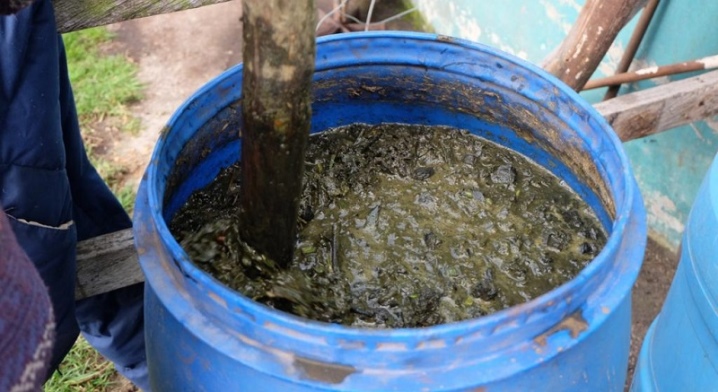
Application
The use of such a solution can be carried out in several ways:
- watering the land before planting seedlings and seeds;
- watering plants during the growing season;
- spraying the leaves if there is not enough nutrition;
- plant feeding;
- watering the land in the fall.
The use of the liquid is carried out by scooping it out of the container by diluting it with water to the desired concentration, depending on the type of plants. After that, the aqueous solution is either poured onto the soil or under the plant, or they are simply sprinkled with foliage.
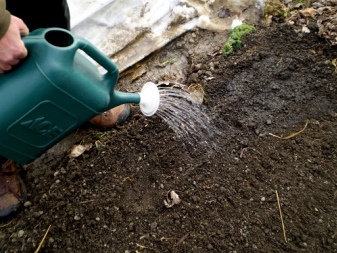
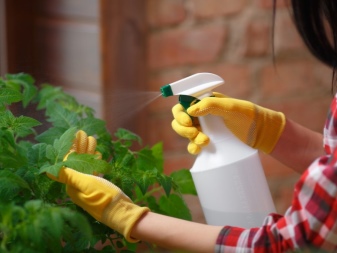
For information on how to prepare fertilizer from grass in a barrel, see the next video.













The comment was sent successfully.